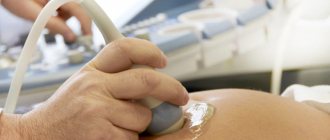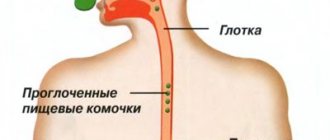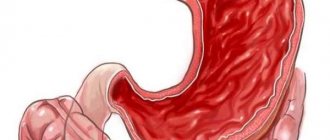Classification
The classification of Intestinal fistulas proposed by V. A. Oppel and N. I. Bobrikova (with some additions by P. D. Kolchenogov and B. A. Vitsyn, 1964, 1965) is considered the simplest and most convenient. According to this classification, intestinal fistulas are divided as follows: according to etiology - congenital, acquired (therapeutic, traumatic, others); according to the location of the fistula opening - external and internal; according to the structure of the fistula opening and canal - labiform, tubular and transitional; according to the number of holes - single (single-oral, bioral) and multiple (adjacent, distant); by localization - fistulas of the duodenum, small intestine, colon, rectum; according to the passage of intestinal contents - complete, incomplete; according to excreta - feces, mucous, purulent-fecal, purulent-mucosal, others; according to the presence or absence of complications - uncomplicated and complicated with local (abscess, fecal phlegmon, dermatitis, osteomyelitis, etc.) and general (exhaustion, sepsis, etc.) complications.
Diagnostic methods
A gastric, small- or colonic fistula can be suspected by the presence of a characteristic clinical picture in the patient, during the collection of an anamnesis of the disease with the presence of surgical intervention, as well as during examination if the fistulous tract is external. To confirm the diagnosis, an ultrasound examination of the abdominal organs is performed. It is possible to perform radiography with preliminary administration of a contrast agent orally, which helps to visualize the structure of the gastrointestinal tract. Magnetic resonance and computed tomography are also indicated. A general and biochemical blood test is taken to determine the state of water, electrolyte and protein metabolism in the human body. It is also recommended to perform fistulography, which involves injecting a contrast agent into the fistulous tract followed by radiography. If the stomach is damaged, esophagogastroscopy is indicated.
Return to contents
Pathological physiology
Pathological changes in the body are determined primarily by the localization and complications of K. s. The higher the fistula is located, the greater its negative effect on the body. In this case, complete fistulas or incomplete ones, but with significant discharge, quickly lead to pronounced disorders in the body. The release of large amounts of fluid, enzymes, electrolytes and undigested foods leads to progressive depletion of the body. The greatest changes, consisting of progressive dystrophy, are observed in the liver and kidneys.
With external K., especially in the small intestine, hypoproteinemia with disproteinemia occurs quite quickly, manifested by hypoalbuminemia, an increase in alpha and gamma globulin fractions. Depending on the height of the fistula, the water-electrolyte balance is disturbed to one degree or another; hypokalemia and hypovolemia occur especially quickly, which, in turn, contribute to electrolyte imbalance. These changes are less pronounced in low intestinal fistulas and colonic fistulas. However, when purulent-septic complications are added to the latter, toxemia phenomena develop, which also lead to severe degenerative changes with the development of hepatic-renal failure.
The cause of death in K. s. Most authors consider the loss of digestive juices, electrolytes, a sharp disturbance of protein metabolism, and dehydration of the body.
Surgery to create a fistula in the stomach (gastrostomy)
Gastrostomy (gastrostomia; Greek gaster stomach + stoma mouth, opening, passage) is an operation to create an artificial external fistula of the stomach. It is used for introducing food directly into the stomach in case of obstruction of the esophagus or for its functional shutdown.
Indications for surgery: cicatricial, tumor stenosis of the esophagus, severe traumatic brain injury, bulbar disorders requiring long-term artificial nutrition of the patient. . The application of a gastric fistula, performed using any of the generally accepted methods, is considered a minimal surgical intervention, easily performed in the most weakened patients and saves them from starvation.
In most cases, the treatment of such an anatomical defect consists of its surgical removal followed by tissue plastic surgery
No special preparation of the patient for the operation is required. However, before surgery, it is advisable to correct the most severe disturbances in water and electrolyte balance for a short period. Gastrostomy can be performed either under general anesthesia or under local anesthesia.
The main disadvantages of the technique when performing gastrostomy, accompanied by complications, are a decrease in the volume of the stomach and the inability to take in enough food, a violation of the tightness of the fistula and prolapse of the gastrostomy tube.
In addition, gastric contents often leak out and irritation of the skin of the abdominal wall occurs. Sometimes it is impossible to reinsert a tube that has fallen out of the fistula.
After the operation, disruption of the blood supply and necrosis of the gastric cone, cutting through of purse string sutures and infection of the abdominal cavity, divergence and suppuration of the edges of the abdominal wall wound with the subsequent development of peritonitis, etc. may also occur.
Recovery after surgery
The skin around the stoma (opening) should be washed daily with warm water and soap. The tube should not be immersed in water for three weeks after surgery. After showering, the skin around the stoma should be thoroughly dried. In addition to treatment with water, as prescribed by a doctor, you can use antiseptics without alcohol - octenisept, miramistin, etc.
To prevent the tube from becoming clogged, it should be rinsed with water before and after each feeding. Water volume – 20-40 ml. Occlusive dressings should not be used because they can cause bedsores and granulations on the skin. Check the skin around your stoma regularly for redness, irritation, or swelling. If they appear, you need to consult your doctor.
Sources:
- https://www.krasotaimedicina.ru/diseases/zabolevanija_gastroenterologia/gastric-fistula
- https://studfile.net/preview/3968726/page:51/
- https://www.phag-rostov.ru/articles/lechenie-svishha-narodnymi-sredstvami/
- https://centr-hirurgii-spb.ru/main-hirurgiya/gastrostomiya/
Clinical picture
The main symptom of external intestinal fistula is the release of chyme, gases or feces from the wound. With low fistulas, especially the left half of the colon, the discharge is periodic. The severity of the clinical picture is determined by the location of the fistula, the amount of excreta released from it, as well as the presence of complications. Complications of K. s. occur in the form of dermatitis, skin maceration, formation of purulent cavities, phlegmon of subcutaneous and retroperitoneal tissue, osteomyelitis. The most severe complication is septicopyemia and septicemia (see Sepsis).
Reasons for development
Fistulas of the gastrointestinal tract occur due to the influence of the following factors on the human body:
- birth defects;
- genetic abnormalities;
- injury;
- malignant neoplasm;
- exposure to radiation;
- purulent destructive process;
- violation of the integrity of the sutures after surgical manipulation;
- partial obstruction of the anastomosis;
- foreign body in the stomach;
- the presence of a focus of chronic infection;
- hernial protrusions of the anterior abdominal wall.
The development of fistulas is often caused by an error during surgical intervention for various inflammatory and traumatic injuries of the gastrointestinal tract. Sometimes a pathological hole is formed when an abscess breaks through in the event of infection of one of the abdominal organs. It is possible that a fistulous tract may form during the disintegration of a cancerous tumor or due to the destructive effects of radiation.
Return to contents
Diagnosis
A preliminary judgment about the localization of the intestinal fistula can be made based on the results of a routine cleansing enema. At the location of K. s. in the colon, water usually pours out through the fistula opening. This is not usually observed if the fistula originates from the small intestine. Observing the patient after eating also gives an approximate idea of the location of the fistula. The discharge of slightly changed food masses from the fistula opening within the next hour after eating indicates the presence of a duodenal or high small intestinal fistula. In doubtful cases, you can give the patient oral solution of methylene blue, carbolene, which makes it easier to ascertain their release from the fistula opening. X-ray examination plays an important role in diagnosis. For high fistulas of the small intestine, X-ray examination of the stomach and intestines, and for large intestinal fistulas, irrigoscopy (see) allows one to accurately determine the location of the fistula opening. With internal K. s. rentgenol, examination of the intestine allows you to clearly establish the direction of the fistulous tract, as well as determine the organ with which the Crimea is communicated. An important role in external K. s. plays fistulography (see), which allows not only to clarify the location of the fistula, but also to determine the condition of the afferent and efferent sections of the intestine. A study of the condition of the efferent part of the intestine is mandatory, first of all, in case of complete fistulas, because with the long-term existence of K. s. There have been cases of significant atrophy and even obliteration of the abducens department. Endoscopic research methods, such as gastroscopy (see), duodenoscopy (see), intestinoscopy (see), colonoscopy (see), are important mainly for the diagnosis of internal fistulas (eg, gastrocolic), i.e. They allow us to clarify the location of the fistula opening, the condition of the intestinal wall, and determine the severity of the inflammatory process or the presence of a malignant tumor.
Diagnosis of gastric fistulas
As for external fistula, its diagnosis is not difficult. A pathological hole is visualized in the skin, from which gastric contents emerge.
The presence of an internal fistula can be suspected by the symptoms it gives. However, with small fistulas, it is not always possible to detect their presence only by the clinical picture, since it appears rather blurred. A doctor may suspect the presence of an internal fistula if a patient complains of abdominal pain, has recently undergone gastric surgery, or has been diagnosed with an anastomotic ulcer.
During an examination of the patient, the doctor may detect the following indirect signs indicating a pathological formation in the stomach:
- Dry skin, decreased turgor. This symptom is characteristic of a progressive disease, which has already led to an imbalance in the water-salt balance.
- During palpation of the peritoneum, the patient will complain of pain.
- Changes in sound when tapping the peritoneal wall.
- Bowel sounds and bursts are heard while listening to the abdominal cavity. In this case, the intestines themselves will be at rest.
To make the most accurate diagnosis, the patient will be sent to undergo the following tests:
- X-ray contrast examination of the stomach. If the patient has a fistula, the contrast agent will enter its cavity and highlight the canal on the x-ray image. The doctor will see that gastric masses exit not only through the natural opening, but also through the pathological canal.
- Dynamic gastric scintigraphy. During the study, the doctor will be able to estimate the speed of passage of the food masses, which will be illuminated with a radioisotope.
- FGDS is an examination of the mucous membrane of the stomach and duodenum using endoscopic equipment.
- Static intestinal scintigraphy. This study will evaluate intestinal permeability. The patient will need to take a drug that will be labeled with a radioisotope.
Types of intestinal fistulas
Congenital intestinal fistulas
Congenital intestinal fistulas occur as a result of disruption of embryogenesis processes in the early stages of fetal development.
Rice. 1. Schematic representation of a complete small intestinal fistula: 1 - umbilical ring with the external opening of the fistula; 2 — abdominal wall (shown in section); 3 — unclosed vitelline-intestinal duct (given in section); 4 - small intestine; 5 - mesentery of the small intestine. Rice. 2. Schematic representation of an incomplete small intestinal fistula: 1 - umbilical ring with the external opening of the fistula; 2 — abdominal wall (shown in section); 3 - unfused distal part of the vitelline-intestinal duct (shown in section); 4 - closed proximal part of the vitelline-intestinal duct; 5 - small intestine; 6 - mesentery of the small intestine.
Small intestinal congenital fistulas are associated with impaired obliteration of the vitelline duct (ductus omphaloentericus). Normally, the yolk-intestinal duct becomes empty by the 3rd month. intrauterine life. If its obliteration is violated, complete or incomplete small intestinal fistulas or umbilical fistulas occur (Fig. 1 and 2).
Complete umbilical fistula
occurs in cases where the vitelline-intestinal duct remains unclosed along its entire length and the lumen of the ileum communicates with the environment through the umbilical ring. Appearance of K. s. quite characteristic and does not present any particular difficulties for diagnosis. After the umbilical cord falls off, the umbilical wound does not close. In the area of the umbilical ring, you can find the intestinal mucosa of a bright red color. The tissue around the fistula is infiltrated. When the child strains and screams, evagination (eversion) of the adjacent segment of the intestine through the fistula is possible, which can lead to obstruction of intestinal patency. In doubtful cases, fistulography is a valuable diagnostic technique. The contrast agent enters the small intestine through the fistula. The constant leakage of intestinal contents leads to maceration of the skin of the anterior abdominal wall and exhaustion. Children are falling behind in physical education. development.
Treatment for complete navel fistulas is only surgical. To avoid complications (evagination, infection of the anterior abdominal wall, ulceration and bleeding), surgery is performed immediately upon diagnosis. The operation consists of excision of the fistula tract along its entire length. A single-row suture is applied to the intestinal defect. The prognosis is usually favorable.
Incomplete fistulas
are observed much more often than complete ones and occur when obliteration of the distal part of the vitelline duct is disrupted.
With incomplete K. s. Among the sparse granulations in the area of the umbilical wound, it is possible to detect a pinpoint fistula opening with a small serous or serous-purulent discharge. The course of such fistulas is always long. Secondary inflammatory phenomena are often associated. To confirm the diagnosis, probing of the fistula tract is performed. Usually the probe can be passed to a depth of 1-2 cm. In doubtful cases, it is necessary to perform fistulography. This allows us to clarify the nature of the fistula.
Treatment of incomplete umbilical fistulas must begin with conservative measures. Daily hygienic baths with a weak solution of potassium permanganate are advisable. After toileting and treatment with alcohol, the umbilical wound is cauterized with 5% alcohol solution of iodine or 10% solution of silver nitrate. As a result of conservative treatment, in most cases, incomplete fistulas close on their own. If conservative treatment is ineffective, surgical intervention is indicated, consisting of excision of the fistula tract. It is advisable to perform the operation after the age of 6 months. The prognosis is usually favorable.
Colonic congenital fistulas
are a consequence of developmental anomalies of the anorectal region (see Anus, Rectum).
The occurrence of colonic congenital fistulas is associated with incomplete closure of the vertical cloacal septum in the early stages of embryonic development. As a result, a communication remains between the anorectal and urogenital parts of the primary cloaca.
These fistulas are observed with a normally formed anus, as well as with atresia of it and the rectum. Fistulas can open into the reproductive system (vagina, vestibule, uterus), into the urinary system (bladder, urethra) and into the perineal area.
With a normally functioning opening of the anus, the act of defecation occurs naturally, but at the same time the feces are partially discharged through the fistula into the organ with which there is a connection. In boys, the fistula most often opens into the urethra, in girls - into the vestibule of the vagina. If there is an anastomosis between the rectum and the bladder, cloudy urine is constantly leaking due to its mixing with feces. At the same time, gases escape through the urethra. Such fistulas are often severe due to the addition of an ascending urinary tract infection. With a rectovestibular fistula, there is usually incontinence of liquid feces and gases. The location of the fistula is determined by external examination and observation of the act of urination. Fistulography finally confirms the diagnosis.
The choice of treatment method and its timing depend on the type of fistula. In patients with a fistula in the urinary system, surgery is indicated immediately after birth and diagnosis. For fistulas in the reproductive system (in girls), the issue of treatment is decided individually. Indications for early surgery (6-8 months) are persistent constipation, accompanied by intoxication and physical retardation. development. In case of a fistula in the vagina or urinary system, it is more advisable to perform abdominoperineal proctoplasty.
Acquired intestinal fistulas
Acquired intestinal fistulas are formed as a result of a complicated course of acute and chronic inflammatory processes in the abdominal cavity or malignant neoplasms. The most common causes of fistula formation are acute appendicitis, peritonitis, ulcerative processes in the gastrointestinal tract. tract, gynecological diseases, intestinal tuberculosis, Crohn's disease. Fistulas can also be a consequence of complications of various surgical operations on the abdominal organs and retroperitoneal space. Often abdominal injuries, especially penetrating wounds, lead to the formation of K. s.
Rice. 3. External labial (unioral) fistula: the intestinal mucosa (1) has fused (2) with the skin Fig. 4. Schematic representation of a complete labiform fistula (in section): 1 - afferent part of the intestine; the arrow indicates the direction of movement of intestinal contents; 2 - apex of the spur (protrusion of the posterior wall of the intestine); 3 - efferent part of the intestine.
With labiform fistulas, the intestinal mucosa fuses with the skin along the entire circumference of the fistula opening (Fig. 3). In a labiform fistula, the following elements are distinguished: the opening of the fistula, the anterior and posterior walls, the adductor and efferent sections of the intestine bearing the fistula. The afferent and efferent parts of the intestinal tube in most patients with labiform fistulas are separated from each other by a protruding posterior wall of the intestine in the form of the so-called. spurs (Fig. 4). The spur can be movable (false) or immobile (true). The first sinks freely when pressed with a finger into the intestinal lumen. Sometimes this happens when the patient's position changes. A true spur does not move into the abdominal cavity either when the patient changes position or when pressing with a finger due to its fixation by scars and adhesions.
Depending on the size of the angle at which the adducting and abducting knees of the intestine bearing the fistula are fixed to each other, sharp and blunt (flat) spurs are distinguished. The top of the spur faces the fistula opening, the base faces the abdominal cavity. Any wall of the intestine can take part in the formation of a spur. The formed true spur does not allow the passage of intestinal contents into the distal section, which leads to the formation of a complete K. s.
Rice. 5. Schematic representation of an incomplete single-oral labiform fistula (in section): 1 - adductor part of the intestine; 2 - opening of the fistula; 3 - efferent part of the intestine; arrows indicate the direction of movement of intestinal contents. Rice. 6. Schematic representation of a complete bioral labiform fistula (in section), having a wide flat spur (indicated by an arrow). Rice. 7. Schematic representation of a tubular external fistula (in section): 1 - opening of the fistula; 2 - abdominal wall; 3 - intestinal lumen.
With large fistulas, protrusion of the adducting or efferent segments of the intestine may be observed, and a large hernial protrusion often forms at the site of such a fistula. With a complete labiform fistula, atrophic changes occur in the abducens knee, and the fistula in these cases is characterized by a short canal and a wide lumen. Labiform fistulas are single-oral (Fig. 5) and bi-oral, and bi-oral fistulas are always complete (Fig. 6).
Tubular intestinal fistulas (Fig. 7) are characterized by the presence of a canal lined with either scar or granulation tissue between the external opening of the fistula and the intestinal wall. In a tubular fistula, in addition to the canal, there is an external and internal opening. Tubular fistulas are usually incomplete and tend to close on their own.
There are also transitional forms of fistulas, when there are signs of labiform and tubular fistulas. D. P. Chukhrienko describes the so-called. pyogenic fistulas, in which there is a purulent cavity between the internal and external openings of the tubular fistula.
Reasons for the formation of fistulas
Pathological fistulas never form on their own. They always occur against the background of some disease of the digestive system.
The main reasons for the formation of gastric fistula can be identified as follows:
- Violation of the technique of applying surgical sutures during gastric surgery.
- Purulent inflammation accompanied by destruction of organ tissue. This process can be started both before and after the operation.
- Obstruction of the anastomosis between the stomach and other organs.
- Stomach cancer.
- The presence of a foreign body in the stomach cavity or in its wall.
- Oxygen starvation of the stomach tissues, which develops against the background of impaired blood supply to it. As a result, one of the areas of the organ is deprived of nutrition, which leads to the death of its tissues.
- Radiation exposure.
- Technical error by the surgeon during surgery.
- Violations of the rules of patient care in the postoperative period.
In the vast majority of cases, fistulas are formed between the stomach and intestines, or between the stomach and the pancreas and/or bile ducts.
Anastomotic ulcer is the main reason leading to the formation of internal gastric fistula. A pathological canal is most often formed after gastric resection (an operation to remove part of an organ), or when an artificial anastomosis is applied between the stomach and intestines.
In the vast majority of cases, a fistula originates from the stomach, paving the “path” to other tissues. Fistulas rarely extend from other organs of the digestive system to the stomach.
Reasons for the formation of external fistulas:
- Dehiscence of sutures after applying an artificial anastomosis between the stomach and intestines;
- Formation of a gastrostomy connecting the stomach to the peritoneal wall;
- Performing surgery on the lesser curvature of the stomach.
Risk factors that by themselves are not capable of leading to the formation of a fistula, but can accelerate the onset of the causes leading to its development:
- Chronic course of diseases of the digestive system;
- The presence of a hidden infection in the body;
- Abdominal trauma, which may result from a bruise, injury, surgery, hemorrhage into the gastric wall;
- Violation of the surgical technique or incorrectly selected type of surgical intervention.
Operations that most often lead to the formation of gastric fistulas:
- Secondary intervention in the peritoneal cavity to remove adhesions;
- An operation performed after an abdominal injury;
- Operations to remove a hernia;
- Diagnostic or therapeutic laparoscopy;
- Formation of anastomosis for stomach or intestinal cancer, or for gastric ulcer;
- Surgery on the biliary tract.
Treatment
Conservative treatment
Conservative treatment should always be comprehensive. Only the ineffectiveness and sometimes the obvious futility of conservative treatment forces one to resort to surgery. Conservative treatment for tubular fistulas should be especially visual and persistent.
Rice. 8. Glass Paul drainage tubes in various sizes.
Its complex includes, first of all, measures aimed at reducing or stopping the leakage of intestinal contents, eliminating exhaustion, dehydration, toxemia, preventing and eliminating the irritating effect of enzymes on surrounding tissues. To reduce or prevent discharge from a labiform fistula, glass and rubber drainage tubes, several types of obturators and valves, as well as special devices have been proposed. The use of Paul-type drainage glass tubes (Fig. 8), rubber valves and transport devices is advisable only for high small-intestinal fistulas, since thick intestinal contents quickly close the lumen of the fistula. Obturators can be used for labiform fistulas of any location, if there is no true spur.
Rice. 9. Schematic representation of the McNaughton apparatus: 1 - adductor knee of the intestine, from which the contents are aspirated; 2 - glass tube in the fistula with holes, with drainage inserted into it; 3 - hose connecting the dropper (4) to a vessel with a glucose solution; 5 — glass reservoir for collecting the contents of the small intestine; 6 — hose connecting the tank to the vacuum apparatus; 7 - hose directing intestinal contents from the reservoir to the outlet elbow of the intestine; 8 - abducent limb of the intestine. Rice. 10. Schematic representation of some options for reducing the functioning of a labiform fistula. Closing the fistula according to Rokhkind: 1 - fistula; 2 parallel drainage tubes: the lower one in the intestine, the upper one on the skin. Rice. 11. Schematic representation of some options for reducing the functioning of a labiform fistula. Closing the fistula with a rubber obturator valve: 1 - intestine (cross section); 2 - fistula; 3—rubber flap (on the left - close-up), stitched with thin aluminum wire for elasticity (4). Rice. 12. Schematic representation of some options for reducing the functioning of a labiform fistula. Closing the fistula with a funnel-shaped obturator, reinforced with a Moore clamp: 1 - fistula; 2 — rubber funnel; 3— gauze swab; 4 - Moore clamp. Arrows indicate the movement of intestinal contents
For fistulas of the small intestine with a well-defined spur, devices are used that aspirate intestinal contents from the afferent segment and transport them to the efferent segment of the intestine (McNaughton apparatus, Fig. 9). I. M. Rokhkind used rubber drainage tubes to close the lumen of the intestinal fistula, which simultaneously pushed back the spur and closed the lumen of the fistula (Fig. 10). Khatskelevich (1938) proposed his model of a rubber damper (Fig. 11). The obturator proposed by P. B. Kolchenogov is simple and easy to use (Fig. 12). The author managed to achieve complete obturation in 44.2% of patients with labiform K. s.
However, various types of valves have not found widespread use, since they often compress the intestinal wall, which causes disturbances in its nutrition with the subsequent development of complications.
To combat skin maceration, there are methods that can be divided into means of mechanical protection (obturation of the fistula) and means of biological protection (various buffer solutions, milk powder powders, acidophilus paste, meat broth, meat juice, small plates of beef meat , ointments, etc.). Of the ointments, Lassar paste, Lauenstein ointment (dermatol 4 g, zinc oxide 50 g, starch 50 g, lanolin 60 g, linseed oil 36 g) and zinc ointment are recommended. Gypsum, talc, charcoal, and kaolin are also used as powders. It is possible to create a protective film on the skin from rubber glue dissolved in gasoline, from glue BF-2, BF-6, VBK-14. Water baths and the open method using a frame with electric lamps are rarely used. For local treatment of tubular K. s. The Potter method is used: a thin rubber catheter is inserted into the fistula and 0.1 N is infused drip-wise. saline solution, other buffer solutions can be used instead.
When treating tubular fistulas of the colon, patients are prescribed rest, medicated stool retention, and a strict diet. Food should be high in calories, easily digestible, and contain as little fiber as possible. Meals should be fractional (5-6 times a day). For high fistulas, oral fluid intake should be limited to 500 ml. The introduction of liquid and solid food is strictly separated. The daily diet includes meat dishes, runny eggs, omelet with milk, pureed cottage cheese with sour cream, butter 20-30 g, white bread, crackers, dry cookies, sugar, hard-boiled porridge (semolina, rice), vermicelli, jelly, mousses, jelly, vitamins. As the discharge decreases and thickens, fiber is added in the form of tender vegetables, mashed potatoes, carrots, and cauliflower. The patient should lie predominantly on the side opposite the fistula. In this position, the back wall of the intestine sags and the intestine becomes more passable for gases and feces.
In the presence of local inflammatory processes (infiltration, abscesses, purulent leaks), their adequate drainage is necessary. Along with local treatment, measures should be taken to prevent exhaustion and dehydration of the body. For this purpose, medicinal solutions are administered intravenously (5% glucose solution 1-1.5 l, Ringer solution 1-1.5 l, etc.), vitamins, protein preparations such as casein, aminopeptide, plasma ( see Parenteral nutrition). Blood transfusion is also indicated.
Uncomplicated tubular fistulas heal in a significant number of cases under the influence of restorative treatment, appropriate diet and local treatment. Therefore, to the surgical treatment of external K. you need to resort no earlier than after 6-12 months.
Symptoms
Local signs of external fistula:
- a hole on the anterior abdominal wall at the site of the projection of the stomach;
- maceration is observed around the hole - erosion of the skin;
- Foamy contents (stomach secretions) are released from the fistula tract. Recently eaten food may be released.
The symptoms of internal gastric fistula depend on which organ the stomach communicates with.
Internal fistulas begin to manifest certain symptoms already at the stage of their formation. Since in the abdomen there is actually a process of melting of the walls of the abdomen and the organ with which it communicates through a fistula, a picture of an acute abdomen can be observed. Often the symptoms are similar to those that develop when a stomach or duodenal ulcer is perforated - namely:
- sharp pain in the abdomen;
- vomit;
- a sharp deterioration in general condition with signs of intoxication.
Characteristic signs of a fistula connecting the stomach and the small or large intestine are as follows:
- uncontrollable diarrhea;
- steatorrhea – increased excretion of fatty particles in feces.
If reflux is observed from the intestines into the stomach, the course of the disease is more severe than if the gastric contents were refluxed into the intestines.
If a fistula forms between the stomach and large intestine, then the following appears:
- smell of feces from the mouth (due to the reflux of fecal contents from the colon into the stomach);
- belching and vomiting of contents with a fecal odor, in severe cases - feces;
- diarrhea.
General disorders of the body are observed due to improper migration of nutrients in the gastrointestinal tract - primarily proteins. First, there is a gradual loss of weight, then due to persistent progression - exhaustion of the body. It is also possible to increase body temperature to 37.2-37.4 degrees Celsius.
Due to disruption of the natural digestive process, autointoxication is observed - the body poisons itself . Due to the fact that the structures of the brain are mainly affected, autointoxication is manifested by such general symptoms as:
- lethargy;
- apathy;
- loss of interest in what is happening;
- constant headaches;
- disturbances of the emotional state in the form of depressive disorders.
The wider the described pathological “gateway” of the stomach with other organs or skin, the more pronounced the clinical picture and the more severe the patient’s condition. If a fistula tract connects the stomach to the large intestine, then the patient’s condition is worse than with a fistula of the same diameter and duration between the stomach and small intestine.










